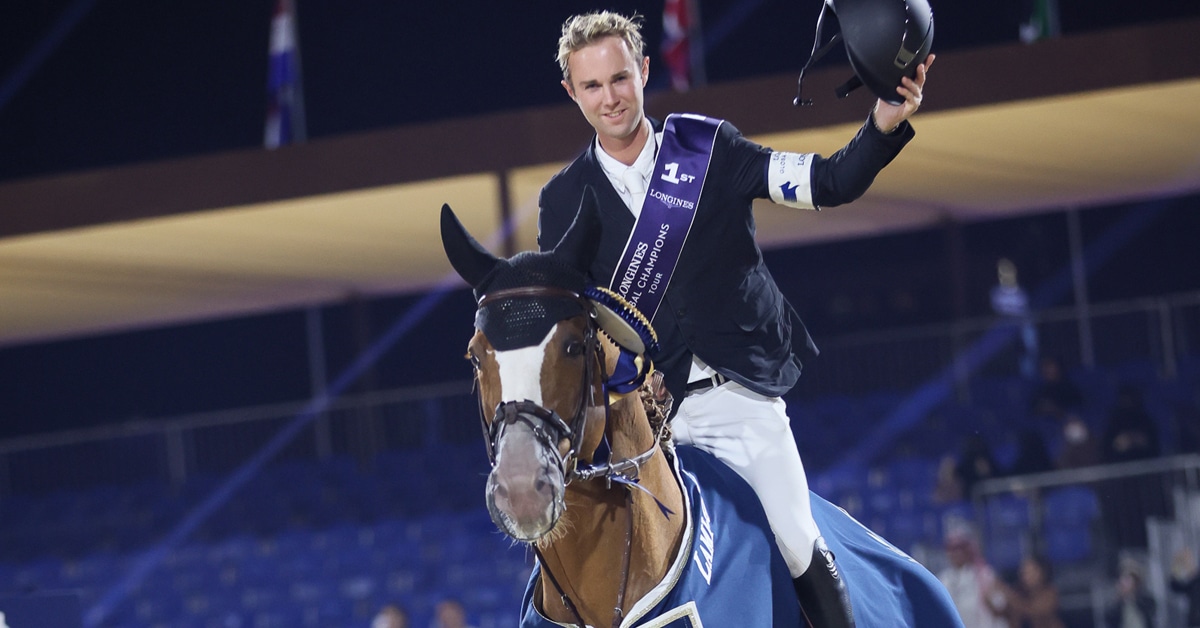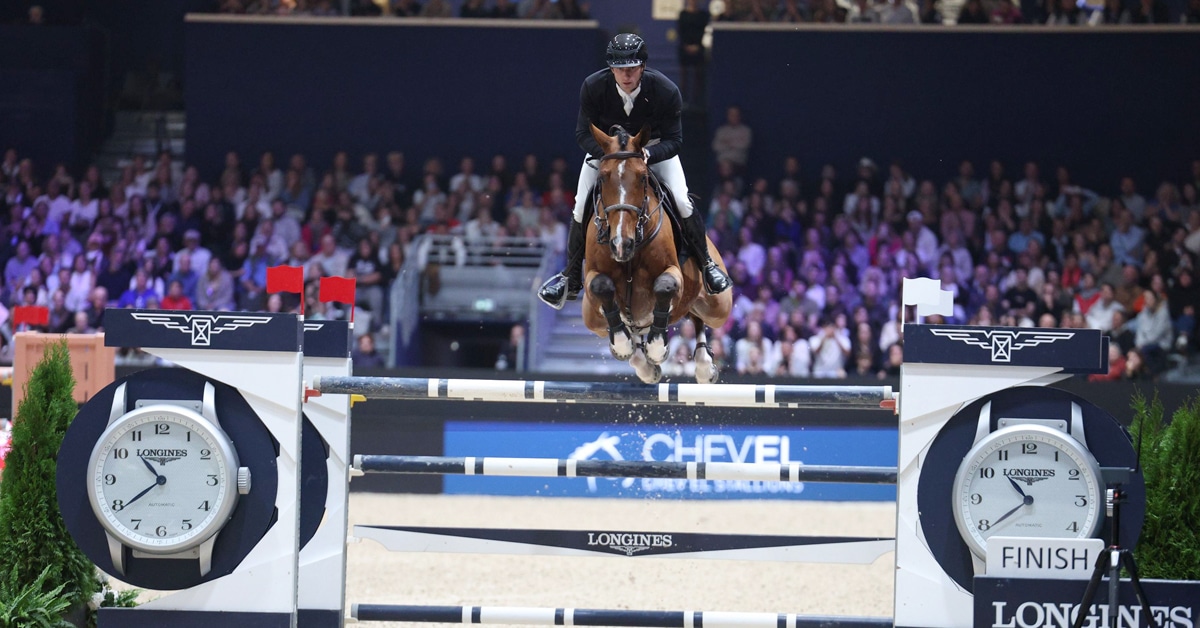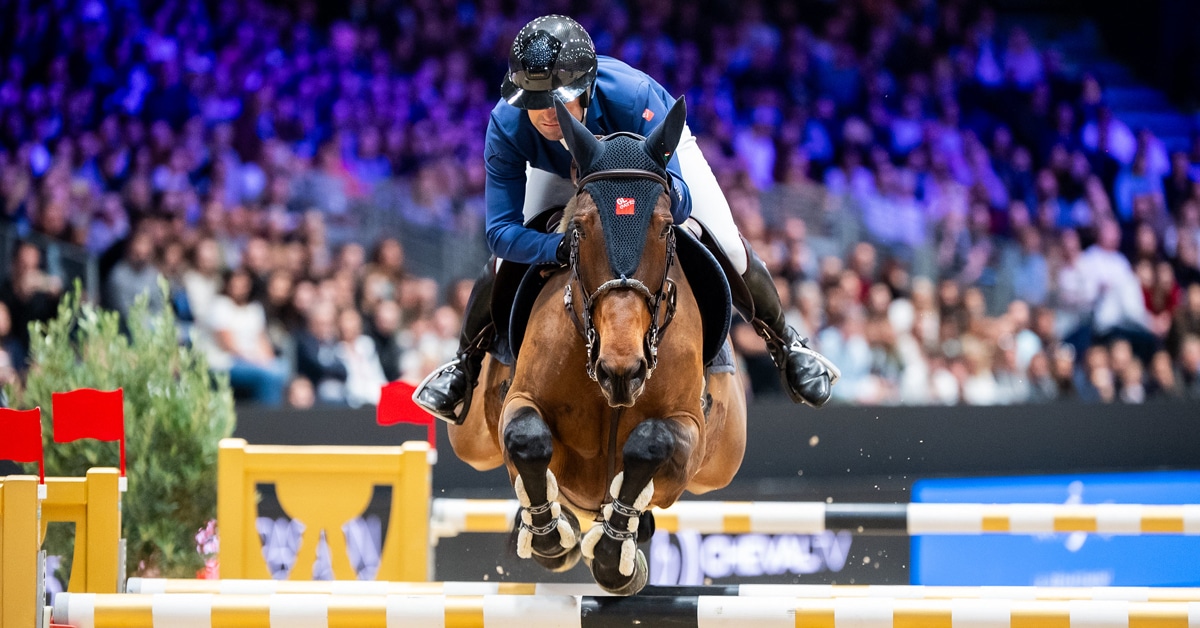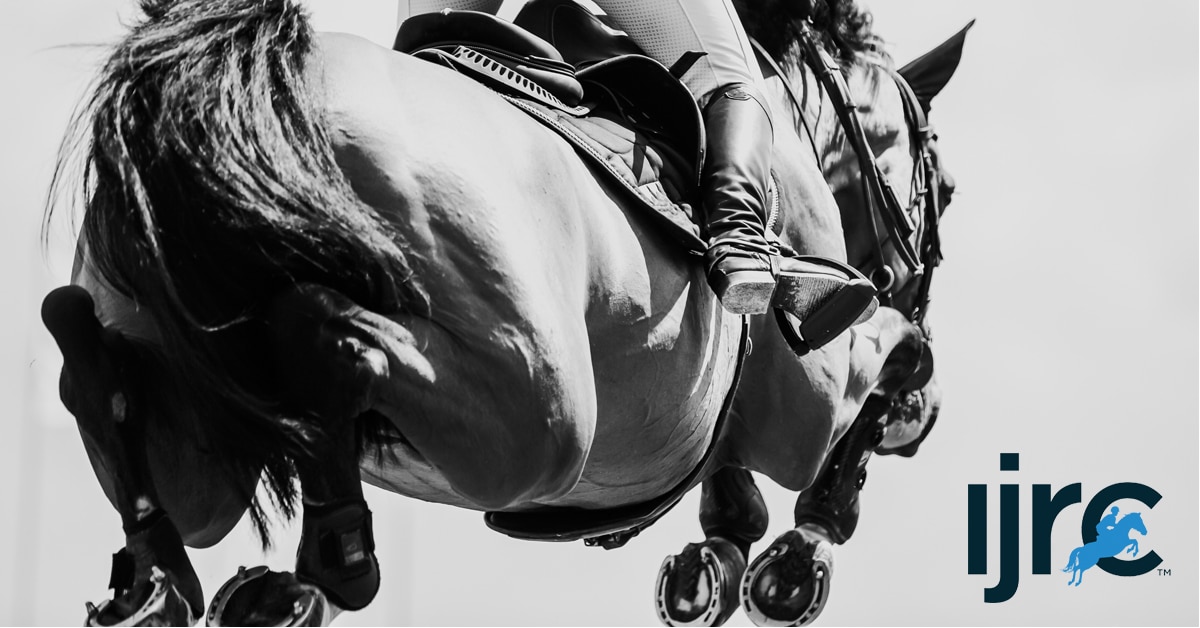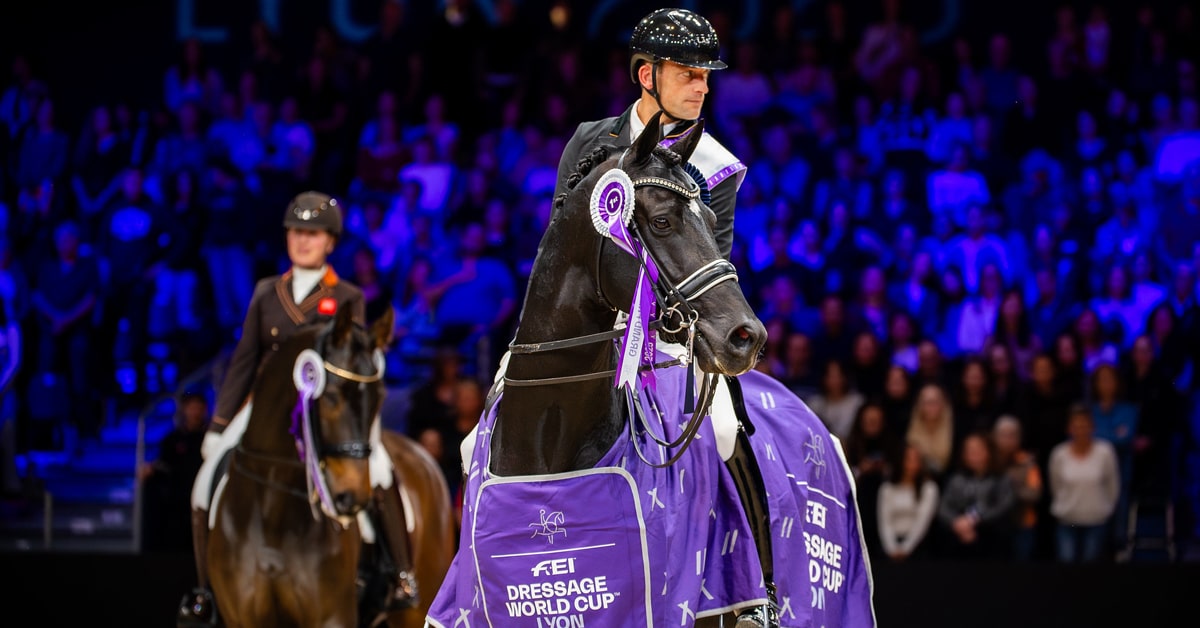The 2018 Equestrian Canada (EC) Convention kicked off on Friday, April 6 at the Brookstreet Hotel in Ottawa, ON with a full day of interactive learning opportunities, exceptional speakers and exciting social events.
EC Leadership Speaks to the Future
The day began with the Rise & Shine Welcome Breakfast, where delegates were invited to enjoy a meal with the EC Senior Leadership while gaining an inside look at what EC has achieved to date during the first six months of the current Board of Directors’ term (Phase I), and what they plan to achieve moving forward (Phase II).
EC President, Meg Krueger led the session and was joined by presenters, Vice President, Rupert May and Governance Chair, Charles Cue. In addition, Krueger introduced newly appointed EC CEO, Richard Mongeau, who provided a welcome address to delegates.
Krueger opened by speaking to the current state of EC and the Canadian equestrian industry, and the vital need to encourage youth to engage at the governance level.
“We all recognize that there is a great opportunity for growth in our sport and industry. Many sports and pastimes are facing similar challenges to us with a lack of increase, or in many cases, decline,” said Krueger, who went on to outline a few contributing factors, including competition with other sports and hobbies, a decline of overall physical activity, the aftermath of an economic recession, and an aging demographic. “Youth act, think, socialize and are influenced differently than my generation and the generations before me. It is critical that we are centred on welcoming and encouraging youth to be part of our boards, committees and associations, because we need that new perspective and new insight on how the world is changing and how social influence is changing.”
Krueger continued, “Without the entry of youth and a focus on innovation, we won’t evolve. But, we have a real opportunity, and the board looks at this every day. Our job and our duty is to see where the organization needs to go in the future. And there is an opportunity for everyone to be part of that journey.”
From there, Krueger, May and Cue moved on to highlight the achievements of the Board and EC team during Phase 1 (October 2017 to March 2018), which included:
- Stabilizing EC operations and hiring a Chief Executive Officer.
Bringing financial reporting up to date and approving the 2018 budget.
Increasing communication through 100+ meetings with a wide range of stakeholders, and consistent digital communications.
Strengthening international relationships through EC Board representation at events, such as the FEI General Assembly, to promote and represent Canada in major discussions involving rule changes, disciplines, and more.
Creating a Service Agreement Committee to strengthen collaboration and partnership with Provincial and Territorial Sport Organizations (PTSOs).
Collaborating with PTSOs on a Coaching and Athlete Development Plan for a coaching and grassroots development pathway. EC committed to nearly $500,000 in funding through a multi-year plan, with $37,500 already in process and $175,000 approved in the 2018 budget.
The EC Senior Leadership also outlined the Phase 2 priorities, which include:
- CEO on-boarding support for a seamless and complete transition.
An organizational efficiency review by the CEO.
Request for Proposal process for an integrated membership, event sanctioning and national standings system.
Final preparation for the 2018 FEI World Equestrian Games.
The presentation was livestreamed on EC’s Facebook, and can be viewed in full here
Concussions & Return-to-Play Panel Fosters Opportunities for Education & Progress
The educational opportunities on opening day of the EC Convention included the Concussions & Return-to-Play panel, which facilitated an engaging discussion concerning education, awareness and enforcement of EC’s Concussion & Return-to-Play protocol, implemented in 2017. Moderator and Senior Coaching Consultant from the Coaching Association of Canada, Wayne Parro, began the session by encouraging audience interaction to capitalize on the knowledge of industry experts present.
The panel was comprised of Dr. Elisabeth Hobden, Canadian Equestrian Team (CET) Physician; Stephanie Cowle, Parachute Canada Solutions Project Manager; Anne Welch, FEI 2* and EC Senior Steward; and Jennifer Eastwood, EC Interim Director of Technical Development. Dr. Hobden and Cowle provided valuable insight into concussion research and care, while Eastwood and Welch shed light on EC’s concussion initiatives and internationally-lauded Return-to-Play protocol.
Comments on key takeaways included:
“You don’t necessarily realize how impaired you are after a concussion. I think we forget that the brain is injured when we ask, ‘Hey, are you okay, let’s get you back on your horse.’ It’s important to stop and see if the people around are happy to see the rider back on the horse because the person themselves is brain-injured. Just because it appears that someone is recovered, even though they might feel well, the reality is they’re now at greater risk for another concussion.” – Dr. Elisabeth Hobden
“A fall in the warm up requires a medic just as much as a fall in the ring. If the human and the equine have become separated, we’re going to have a conversation. If it’s in the ring, it’s judges’ territory. If he or she falls elsewhere, then the steward is technically the next level of defence. We need to look out for people. If someone has had an injury, apart from getting a medic, you must tell an official.” – Anne Welch
“We have to learn that getting back on the horse after a fall is not always the stronger decision. We’ve been told it’s a weakness, but there are medical concerns, so it’s about re-educating ourselves as parents, as coaches, and as stakeholders.” – Jennifer Eastwood
“We’re really promoting concussion awareness and education in sport organizations, implementing your protocols, and getting those possibly-concussed players removed. It sounds like struggle and process, but at the end of the day it’s about the health of the athlete and getting them back to the sport they love.” – Stephanie Cowle
For more information on EC’s Return-to-Play protocol, visit here.
Olympian Claire Smith Shares her Journey of Identity Reconstruction Post-Injury
EC was honoured to host Canadian Eventing Olympian and author, Claire Smith, at the 2018 Convention. After suffering a traumatic brain injury at the 1997 Burghley Open European Three-Day Event Championships. She wrote about her healing experience and the identity reconstruction that followed in her new memoir, Falling into Now: Memories of Sport, Traumatic Brain Injury, and Education.
“I’ve distanced myself from the equestrian world emotionally,” said Smith during what was her first speaking engagement with an equestrian audience since the publishing of her book. “It’s a fear of reconnecting with my old life and putting myself in a situation where I’ll feel vulnerable. I’m afraid of touching, feeling, or smelling horses because I’m afraid I’ll be drawn back.”
Smith went on to explain how, despite her reservations, she has been able to reconcile and eventually transcend her all-consuming equestrian identity and construct a more positive, comprehensive sense of self.
“It took a long time for me to see illness as opportunity, and it took me a long and painful time to realize that there’s a lot more to me than being an equestrian,” said Smith. “Don’t let what you do define you. I’m not defined by what I do, whether it is an equestrian, a survivor of head injury, or a writer.”
Click here for more information on Claire’s story, and to find out how to purchase her memoir.
Dr. Hilary Clayton Provides Evidence-Based Practical Takeaways on Tack Fit and Equine Biomechanics
Always a highly popular presenter, Dr. Hilary M. Clayton, BVMS, PhD, Dipl ACVSMR, MRCVS returned to the EC Convention in 2018 to discuss the scientific effects of the rider and saddle on creating a comfortable, safe ride for the horse. Dr. Clayton walked the rapt audience through her cutting-edge research, illustrating the variety of factors that can affect how saddles distribute pressure on a horse’s back.
“We have a lot of challenges when it comes to fitting a saddle to a horse,” acknowledged Dr. Clayton. “Conformation is highly unpredictable; most of the time horses are not symmetrical. We fit the saddle in a static situation, when in fact riding is a very dynamic sport and it’s very difficult to know what’s happening under the saddle when the horse is performing. It is a significant task and a difficult task to find a saddle that fits and is comfortable in all gaits.”
Dr. Clayton continued, “You can have different riders with the same weight that are different in their postural control, their balance, or their fitness, so it’s not just the weight of the rider that’s important. And then you have to look at the type of activity, as well as both the intensity and the duration of work.”
A renowned and published researcher, Dr. Clayton offered several valuable, practical takeaways informed by her scientific research. Her ongoing studies about how tack effects performance have incredibly promising implications for the way horses are ridden and maintained. Overall, she was optimistic about the state of equine welfare as supported by scientific research, commenting: “Even in the time that I’ve been working on equine biomechanics, the quality of the horses has improved dramatically. And saddles are continuing to evolve – in fact, all aspects of tack are continuing to involve.”
Red & White Social Event Jumpstarts Fundraising for the #RideToTryon
Day one of the 2018 EC Convention concluded with the #RideToTryon Red & White Social Event in support of the CET’s journey to the 2018 FEI World Equestrian Games (WEG). Four-time Canadian Olympian, Curt Harnett provided a rousing and entertaining keynote address. He spoke to the power of sport and how his innate passion for cycling carried him through the highs and lows of his cycling career, culminating in his bronze medal performance at the 1996 Atlanta Olympics.
“What I learned on July 27, 1996 was the power of sport,” said Harnett during a keynote address that took the delegates through a full spectrum of emotion, from tears of laughter to misty-eyed inspiration. “That’s why you’re here, because of that same unbridled passion. And, you all share it for the same thing – the horse… Something that looked at you funny one day and made you fall in love. You tweaked its nose, it looked at you sideways and showed you its teeth, but that’s why you’re here. Harnessing that power, that drive, that love, is the tricky part. And that is where the magic happens.”
Harnett’s inspiring story concluded with a call to the Canadian equestrian community to come together as a unified force in advance of WEG 2018. And that community is one that is close to Harnett’s heart. As the husband of EC Dressage Committee Chair, Victoria Winter, Harnett has spent plenty of time within the horse world.
“You are all custodians of your sport and you are blessed with the opportunity to make it the best sport in Canada,” said Harnett. “We all have a passion for the horse and the opportunity starts here. We have Tryon later this year, an event that happens every four years that brings the equestrian community together. I encourage you to begin today to support those athletes who will be donning the maple leaf in your honour mid-September in North Carolina.
Harnett continued, “When we look for ways to support our teams, we always want to look outside our sport. We’re always looking to say, ‘Why doesn’t somebody sponsor us?’ when, ultimately, the only way to build up your organization is from the inside. It’s a simple challenge and a simple opportunity and you have everything you need to make it happen.”
Visit EC’s Facebook page to enjoy Curt’s full keynote address.
More News
